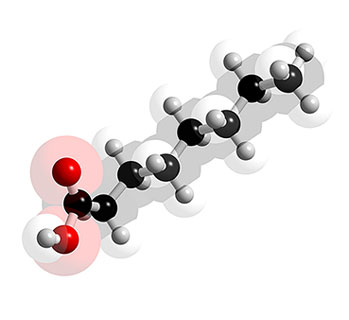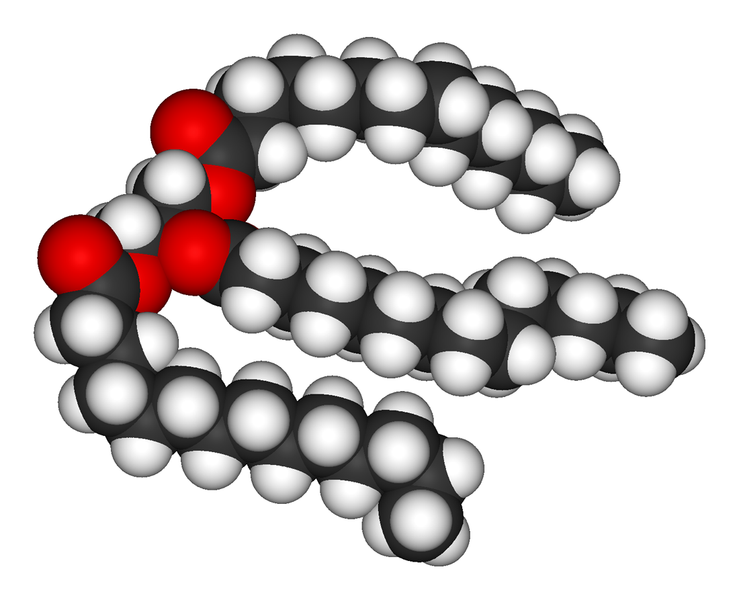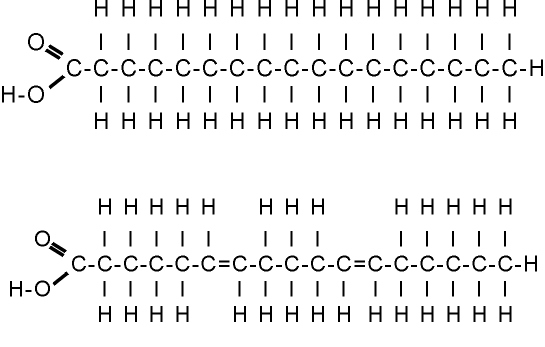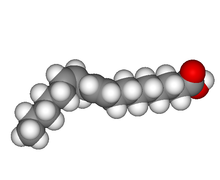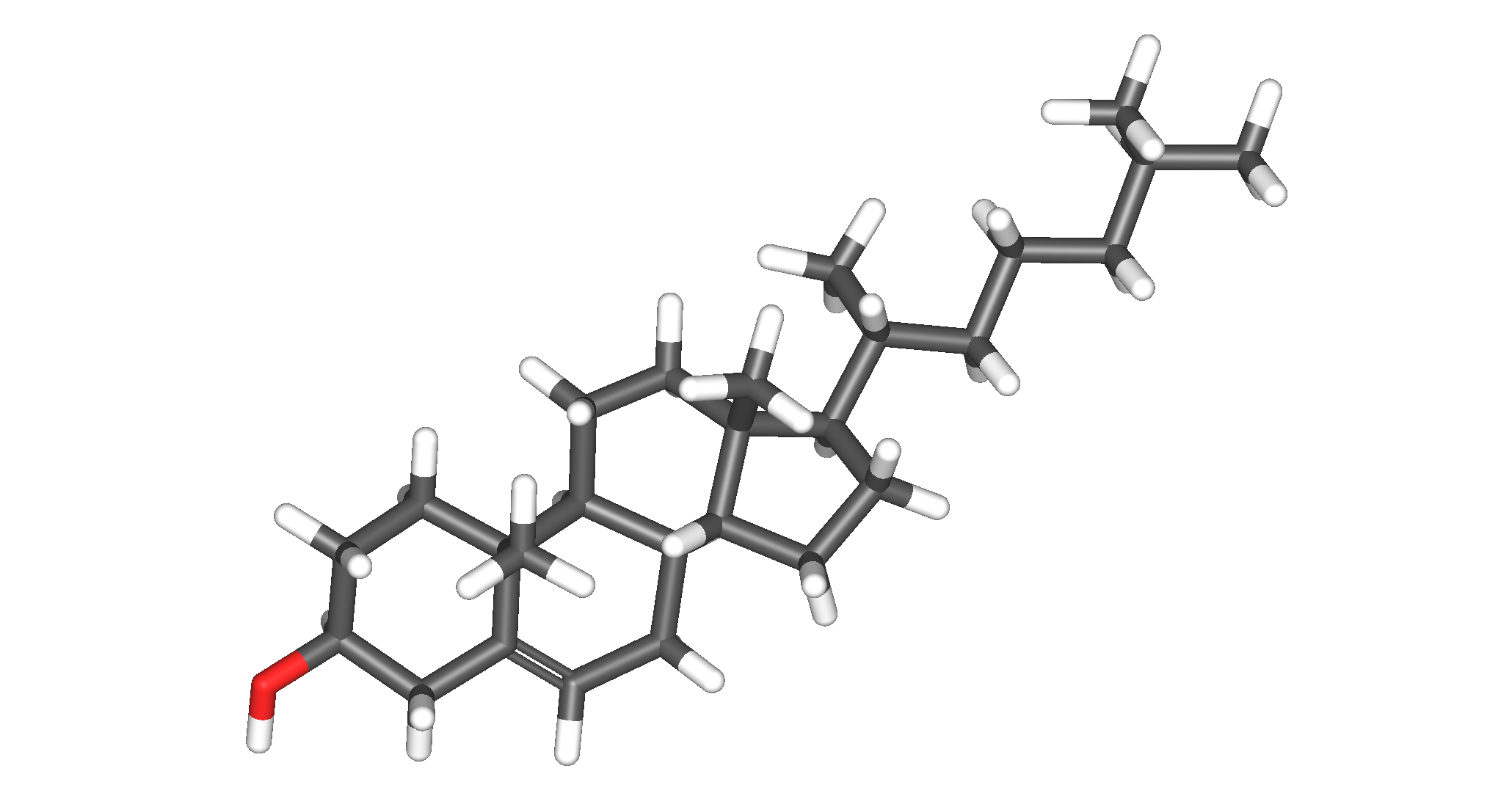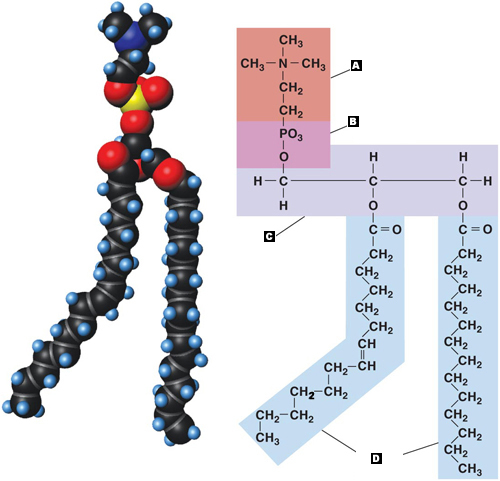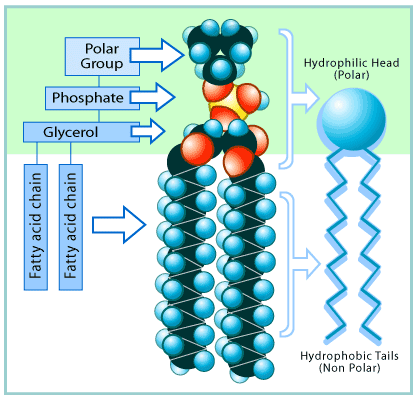Biochemistry Lipids Quiz
(526).jpg)
Check out our amazing biochemistry quiz designed to test how much you know about lipids. You must have studied fats and lipids in your biochemistry chapters. It's time to check your knowledge regarding the same. Lipids are macro biomolecules that are insoluble in water but soluble in non-polar solvents like alcohol and ether. The following quiz also contains questions related to fats or oils. So, give it a try and expand your memory about lipids.
- 1.
The basic backbone of most fat or oil molecules is an alcohol called....
- A.
Glycerol
- B.
Glycerin
- C.
Glyceric acid
- D.
Glycogen
Correct Answer
A. GlycerolExplanation
Glycerol is a very simple 3 carbon molecule. Each carbon carries a hydroxyl functional group. (OH)Rate this question:
-
- 2.
Which of these statements best describes the composition of Lipids?
- A.
C, H, O in a 1:2:1 Ratio
- B.
C, H, O, N, P all present
- C.
C, H, O in no specific ratio
- D.
C, H, O, S
Correct Answer
C. C, H, O in no specific ratioExplanation
Lipids are a diverse group of organic compounds that are primarily composed of carbon (C), hydrogen (H), and oxygen (O). Unlike carbohydrates, lipids do not have a specific ratio of these elements; their composition varies widely depending on the type of lipid. While some lipids may contain small amounts of other elements like nitrogen (N), phosphorus (P), or sulfur (S), the primary elements found in lipids are C, H, and O. Therefore, option C is the most accurate description of the composition of lipids.Rate this question:
-
- 3.
Which of the following functional groups would be found in typical lipids?
- A.
Carboxyl -COOH (O=C-O-H)
- B.
Hydroxyl -OH
- C.
Carbonyl -C=O
- D.
All of these are possible
Correct Answer
C. Carbonyl -C=OExplanation
The carbonyl functional group (-C=O) is commonly found in lipids, specifically in compounds such as fatty acids and triglycerides. This functional group consists of a carbon atom double-bonded to an oxygen atom. While hydroxyl (-OH) and carboxyl (-COOH) functional groups are present in other types of organic compounds, they are not typically found in lipids. Therefore, option C, stating that the carbonyl functional group is found in typical lipids, is correct.Rate this question:
-
- 4.
The image below shows a molecule of Octanoic Acid. Which type of molecule is it?
- A.
An alcohol
- B.
An unsaturated fatty acid
- C.
A saturated fatty acid
- D.
None of the above mentioned
Correct Answer
C. A saturated fatty acidExplanation
The molecule only exhibits single bonds between carbons (C-C)Rate this question:
-
- 5.
Which of the following would be true of this molecule?
- A.
It is a triglyceride fat
- B.
It is most likely liquid at room temperature
- C.
It is most likely a solid at room temperature
- D.
Only a & b
- E.
Only a & c
Correct Answer
D. Only a & bExplanation
This is clearly a triglyceride: Glycerol bonded to 3 fatty acids. The second and third fatty acids have bent chains, indicating that they're unsaturated fatty acids. Hence this is more likely to be an oil than a solid fat.Rate this question:
-
- 6.
Which of these statements best describes these molecules?
- A.
They are both fatty acids.
- B.
They are both saturated fatty acids.
- C.
The top one is an unsaturated fatty acid; the lower one is saturated.
- D.
The top one is a saturated fatty acid; the lower one is polyunsaturated.
- E.
They are both unsaturated fatty acids.
Correct Answer
D. The top one is a saturated fatty acid; the lower one is polyunsaturated.Explanation
Only the lower molecule shows any double bonds; it is unsaturated - specifically, because it has two C=C double bonds, it is a polyunsaturated fat.Rate this question:
-
- 7.
Which of these is NOT a typical role for lipids in a living organism?
- A.
Provide stored energy reserves
- B.
Form a structural component of cell membranes & many tissues
- C.
A source of glucose, when broken down
- D.
A material from which hormones can be produced
- E.
Protection of internal organs, insulation beneath skin
Correct Answer
C. A source of glucose, when broken downExplanation
Vertebrates store lipids for future nutritional energy, and even as insulation & protection of internal organs. Lipids make up all eukaryotic cell membranes. Steroid hormones are of lipid origin. Only starches produce glucose when digested.Rate this question:
-
- 8.
This is a molecule of Linoleic acid. Which statement best describes it?
- A.
It is an unsaturated fatty acid.
- B.
It is a saturated fatty acid.
- C.
It is a triglyceride fat.
- D.
It is a sterol.
Correct Answer
A. It is an unsaturated fatty acid.Explanation
The carboxyl group at one end (red) and the bent shape of the molecule, indicatin a double or triple Carbon bond, make this an unaturated fatty acid.Rate this question:
-
- 9.
Which molecule is shown below?
- A.
Triglyceride
- B.
Fatty acid
- C.
Cholesterol
- D.
Glycerol
Correct Answer
C. CholesterolExplanation
The four-ring structure is a tell-tale sign of cholesterolRate this question:
-
- 10.
Examine the diagram below, showing a phospholipid. The areas labelled A, B, C, D are (in order...)...
- A.
Protein, phosphate, carbohydrate, lipid
- B.
Phosphate, glycerol, fatty acids, nitrogenous base
- C.
Amino acid residue, phosphate group, glycerol, fatty acids
- D.
Fatty acids, phosphate, carbohydrate, hydrocarbon
- E.
Amino acid residue, fatty acid, glycerol, phosphate
Correct Answer
C. Amino acid residue, pHospHate group, glycerol, fatty acidsExplanation
Area A: This is the phosphate group. It is the polar head of the phospholipid molecule and consists of a phosphorus atom bonded to four oxygen atoms. The phosphate group is hydrophilic, meaning it attracts water.
Area B: This is the glycerol backbone. It is a three-carbon alcohol molecule that forms the central core of the phospholipid molecule. The glycerol backbone is also hydrophilic.
Area C: These are the fatty acid tails. They are two hydrocarbon chains, typically 14-20 carbons long, attached to the glycerol backbone by ester bonds. The fatty acid tails are hydrophobic, meaning they repel water.
Area D: This is the nitrogenous base. It is a molecule containing a nitrogen atom, such as choline or ethanolamine, attached to the phosphate group by a phosphodiester bond. The nitrogenous base can be either hydrophilic or hydrophobic depending on its specific structureRate this question:
-
- 11.
The main role of phospholipids in living cells is to...
- A.
Store energy for future nutritional leads
- B.
Make the cell wall in plant cells
- C.
Make insect exoskeletons
- D.
Form cell membranes in all eukaryotic cells
- E.
Form the basis of many hormones
Correct Answer
D. Form cell membranes in all eukaryotic cellsExplanation
Phospholipids arranged in a bilayer are the basis of all cell membranes.Rate this question:
-
- 12.
Examine the image of a phospholipid, below. Note that some areas are labelled hydrophobic, and others are hydrophilic. What is the term we use for molecules, like this one, that have both properties?
- A.
Hydrogenous
- B.
Ambivalent
- C.
Amphiphilic
- D.
Ambidextrous
- E.
Antipasto
Correct Answer
C. AmpHipHilicExplanation
Please don't tell me you picked antipasto. Unless you're hungry.Rate this question:
-
- 13.
In an aqueous environment, phospholipids will form which of the following?
- A.
Micelles
- B.
Liposomes
- C.
Bilayers
- D.
All of the above
- E.
Only a & c
Correct Answer
D. All of the aboveExplanation
All 3 can form, depending on concentration. They form spontaneously, based on hydrophobic-hydrophilic interactions.Rate this question:
-
- 14.
Which of the following common materials behaves as an amphoteric molecule?
- A.
Olive oil
- B.
Detergent
- C.
Lard
- D.
Fat
Correct Answer
B. DetergentExplanation
Detergent molecules are amphoteric.Rate this question:
-
- 15.
The first cells likely developed from spontaneous associations of phospholipids, called....?
- A.
Liposomes
- B.
Micelles
- C.
Macrophages
- D.
Lipoproteins
- E.
Microlipids
Correct Answer
A. LiposomesExplanation
Liposomes are hollow spheres; capturing the right chemical mix plus a little DNA or RNA gives you a primitive cell.Rate this question:
-
- 16.
Lipids are a class of biomolecules that are primarily hydrophobic due to their long hydrocarbon chains, making them insoluble in water.
- A.
True
- B.
False
Correct Answer
B. FalseExplanation
Lipids are organic molecules characterized by their hydrophobic nature, meaning they do not mix well with water. This is primarily because lipids consist of long hydrocarbon chains or rings, which are nonpolar and do not interact favorably with polar water molecules. Lipids play essential roles in energy storage, membrane structure (as in phospholipids), and signaling in the form of hormones and other molecules.Rate this question:
-
- 17.
Lipids and carbohydrates have virtually the same composition.
- A.
True
- B.
False
Correct Answer
B. FalseExplanation
Lipids and carbohydrates have different compositions. Lipids, including fats and oils, are composed of carbon, hydrogen, and oxygen, but the ratio of hydrogen to oxygen is higher than in carbohydrates. Carbohydrates, such as sugars and starches, have a 1:2:1 ratio of carbon, hydrogen, and oxygen.Rate this question:
-
- 18.
When lipids are being digested, the cell uses up one water molecule.
- A.
True
- B.
False
Correct Answer
B. FalseExplanation
Lipids are hydrophobic, meaning they do not dissolve in water. Therefore, the body uses bile to emulsify lipids and break them down into smaller components for absorption. During this process, the body does not use up a water molecule.
Therefore, the statement “When lipids are being digested, the cell uses up one water molecule” is false.Rate this question:
-
- 19.
Which of the following best describes the formation of lipids?
- A.
Isomerization
- B.
Polymerization
- C.
Dehydration synthesis
- D.
Ammonification
Correct Answer
C. Dehydration synthesisExplanation
Dehydration synthesis is the best description for the formation of lipids. This process involves the removal of water molecules to join smaller molecules together and form larger molecules. In the case of lipids, dehydration synthesis occurs when glycerol and fatty acids combine to form triglycerides. This reaction releases a water molecule for each bond formed, resulting in the synthesis of lipids.Rate this question:
-
- 20.
The breakdown of lipids involves the breaking of a bond using water. This is a process called...?
- A.
Hydration
- B.
Dehydration
- C.
Hydrophobia
- D.
Hydrophilia
- E.
Hydrolysis
Correct Answer
E. HydrolysisExplanation
The breaking (lysis) of a molecule using water (hydro) is hydrolysis.Rate this question:
-
Quiz Review Timeline +
Our quizzes are rigorously reviewed, monitored and continuously updated by our expert board to maintain accuracy, relevance, and timeliness.
-
Current Version
-
Sep 09, 2024Quiz Edited by
ProProfs Editorial Team -
Feb 10, 2011Quiz Created by
Astosich
 Back to top
Back to top



